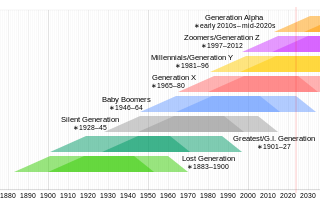
Generation X is the demographic cohort following the baby boomers and preceding the millennials. Researchers and popular media use the mid-to-late 1960s as starting birth years and the late 1970s to early 1980s as ending birth years, with the generation being generally defined as people born from 1965 to 1980. By this definition and U.S. Census data, there are 65.2 million Gen Xers in the United States as of 2019. Most members of Generation X are the children of the Silent Generation and early boomers; Xers are also often the parents of millennials and Generation Z.

The Lewis and Clark Expedition, also known as the Corps of Discovery Expedition, was the United States expedition to cross the newly acquired western portion of the country after the Louisiana Purchase. The Corps of Discovery was a select group of U.S. Army and civilian volunteers under the command of Captain Meriwether Lewis and his close friend Second Lieutenant William Clark. Clark and 30 members set out from Camp Dubois, Illinois, on May 14, 1804, met Lewis and ten other members of the group in St. Charles, Missouri, then went up the Missouri River. The expedition crossed the Continental Divide of the Americas near the Lemhi Pass, eventually coming to the Columbia River, and the Pacific Ocean in 1805. The return voyage began on March 23, 1806, at Fort Clatsop, Oregon, and ended on September 23 of the same year.

Baby boomers, sometimes shortened to boomers, are the demographic cohort following the Silent Generation and preceding Generation X. The generation is often defined as people born from 1946 to 1964 during the mid-20th century baby boom. The dates, the demographic context, and the cultural identifiers may vary by country. The baby boom has been described variously as a "shockwave" and as "the pig in the python". Most baby boomers are children of either the Greatest Generation or the Silent Generation, and are often parents of Gen Xers and Millennials, or Generation Z.

A generation refers to all of the people born and living at about the same time, regarded collectively. It can also be described as, "the average period, generally considered to be about 20–30 years, during which children are born and grow up, become adults, and begin to have children." In kinship terminology, it is a structural term designating the parent-child relationship. It is known as biogenesis, reproduction, or procreation in the biological sciences.
A generation gap or generational gap is a difference of opinions and outlooks between one generation and another. You can find generational changes regarding beliefs, politics, language, work, demographics and values. The differences between each generation can cause misunderstandings because everyone faces different experiences. There are times however when people can cover that gap and understand their generation and the generation before/after them.

Meriwether Lewis was an American explorer, soldier, politician, and public administrator, best known for his role as the leader of the Lewis and Clark Expedition, also known as the Corps of Discovery, with William Clark. Their mission was to explore the territory of the Louisiana Purchase, establish trade with, and sovereignty over the natives near the Missouri River, and claim the Pacific Northwest and Oregon Country for the United States before European nations. They also collected scientific data, and information on indigenous nations. President Thomas Jefferson appointed him Governor of Upper Louisiana in 1806. He died of gunshot wounds in what was either a murder or suicide, in 1809.
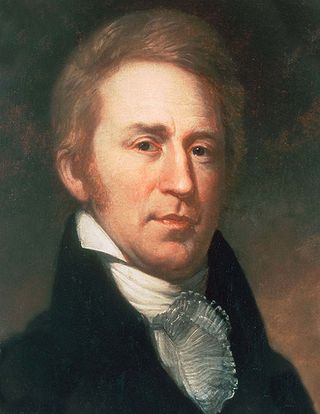
William Clark was an American explorer, soldier, Indian agent, and territorial governor. A native of Virginia, he grew up in pre-statehood Kentucky before later settling in what became the state of Missouri.

The Corps of Discovery was a specially established unit of the United States Army which formed the nucleus of the Lewis and Clark Expedition that took place between May of 1804 and September of 1806. The Corps was led jointly by Captain Meriwether Lewis and Second Lieutenant William Clark. Commissioned by President Thomas Jefferson, the Corps' objectives were scientific and commercial – to study the area's plants, animal life, and geography, and to learn how the Louisiana Purchase could be exploited economically. Aside from its military composition, the Corps' additional personnel included scouts, boatmen, and civilians.
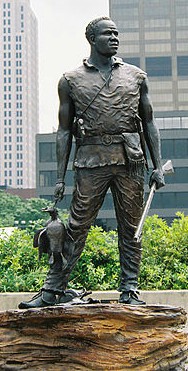
York was an American explorer and historic figure, being the only African-American member of the Lewis and Clark Expedition; he participated in the entire exploration and made significant contributions to its success. He was the first African American to cross the continent and see the Pacific. He has become an American icon and several monuments depicting him have been erected honoring his legacy.
Sandy Jones, in Atlanta, Georgia is an American author and pregnancy and parenting expert. She has written, and co-authored, a dozen books since 1976, including the "Great Expectations" series, focusing on a baby's first years. She has been a lecturer at several events, including La Leche League conferences, an organization that educates women on breast-feeding.

The middle of the 20th century was marked by a significant and persistent increase in fertility rates in many countries of the world, especially in the Western world. The term baby boom is often used to refer to this particular boom, generally considered to have started immediately after World War II, although some demographers place it earlier or during the war. This terminology led to those born during this baby boom being nicknamed the baby boomer generation.
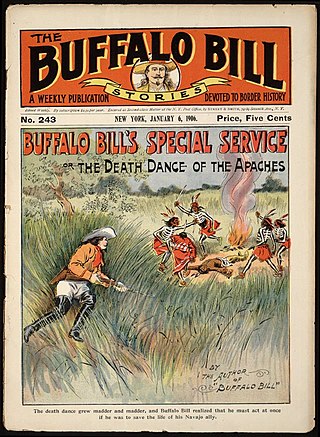
The frontier myth or myth of the West is one of the influential myths in American culture. The frontier is the concept of a place that exists at the edge of a civilization, particularly during a period of expansion. The American frontier occurred throughout the 17th to 20th centuries as European Americans colonized and expanded across North America. This period of time became romanticized and idealized in literature and art to form a myth. Richard Slotkin, a prominent scholar on the subject, defines the myth of the frontier as "America as a wide-open land of unlimited opportunity for the strong, ambitious, self-reliant individual to thrust his way to the top."
William H. Thomas, also known as Bill Thomas, is an American author, performer and authority on geriatric medicine and eldercare from New York State. In 2014, Thomas organized a 25-city "non-fiction" theatrical tour to launch his book and to promote the documentary film Alive Inside. He is the founder of The Eden Alternative, a philosophy and program that de-institutionalized nursing homes in all 50 states and worldwide over the past 20 years. A self-described “Nursing Home Abolitionist,” he is also creator of Green House Project, a long-term care approach where nursing homes are torn down and replaced with small, home-like environments. In 2005, the Robert Wood Johnson Foundation announced a five-year $10 million grant that would result in the creation of Green House projects in all fifty states. As a professor at The Erickson School at UMBC, Thomas led development of the nation's first emergency department designed for older adults.

Sacagawea was a Lemhi Shoshone woman who, in her teens, helped the Lewis and Clark Expedition in achieving their chartered mission objectives by exploring the Louisiana Territory. Sacagawea traveled with the expedition thousands of miles from North Dakota to the Pacific Ocean, helping to establish cultural contacts with Native American people and contributing to the expedition's knowledge of natural history in different regions.
The "Me" generation is a term referring to Baby Boomers in the United States and the self-involved qualities associated with this generation. The 1970s was dubbed the "Me decade" by writer Tom Wolfe; Christopher Lasch wrote about the rise of a culture of narcissism among younger Baby Boomers. The phrase became popular at a time when "self-realization" and "self-fulfillment" were becoming cultural aspirations to which young people supposedly ascribed higher importance than social responsibility.
Events from the year 1805 in the United States.
The Strauss–Howe generational theory, devised by William Strauss and Neil Howe, describes a theorized recurring generation cycle in American history and Western history. According to the theory, historical events are associated with recurring generational personas (archetypes). Each generational persona unleashes a new era lasting around 20–25 years, in which a new social, political, and economic climate (mood) exists. They are part of a larger cyclical "saeculum". The theory states that a crisis recurs in American history after every saeculum, which is followed by a recovery (high). During this recovery, institutions and communitarian values are strong. Ultimately, succeeding generational archetypes attack and weaken institutions in the name of autonomy and individualism, which eventually creates a tumultuous political environment that ripens conditions for another crisis.
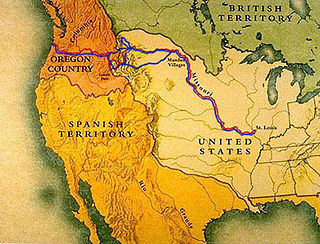
This is a bibliography of literature dealing with the Lewis and Clark Expedition.

The Lewis and Clark Exposition Gold dollar is a commemorative coin that was struck in 1904 and 1905 as part of the United States government's participation in the Lewis and Clark Centennial Exposition, held in the latter year in Portland, Oregon. Designed by United States Bureau of the Mint Chief Engraver Charles E. Barber, the coin did not sell well and less than a tenth of the authorized mintage of 250,000 was issued.
Shirley Christian is a Pulitzer Prize-winning journalist and author, known for reporting on the Central American crisis during the 1970s and 1980s. Christian has worked as a foreign correspondent for the New York Times, Miami Herald, and Associated Press. Her book on the Nicaraguan Revolution, according to the Wall Street Journal, “may stand as the definitive account of the fall of Anastasio Somoza and the rise of the Sandinistas.”












